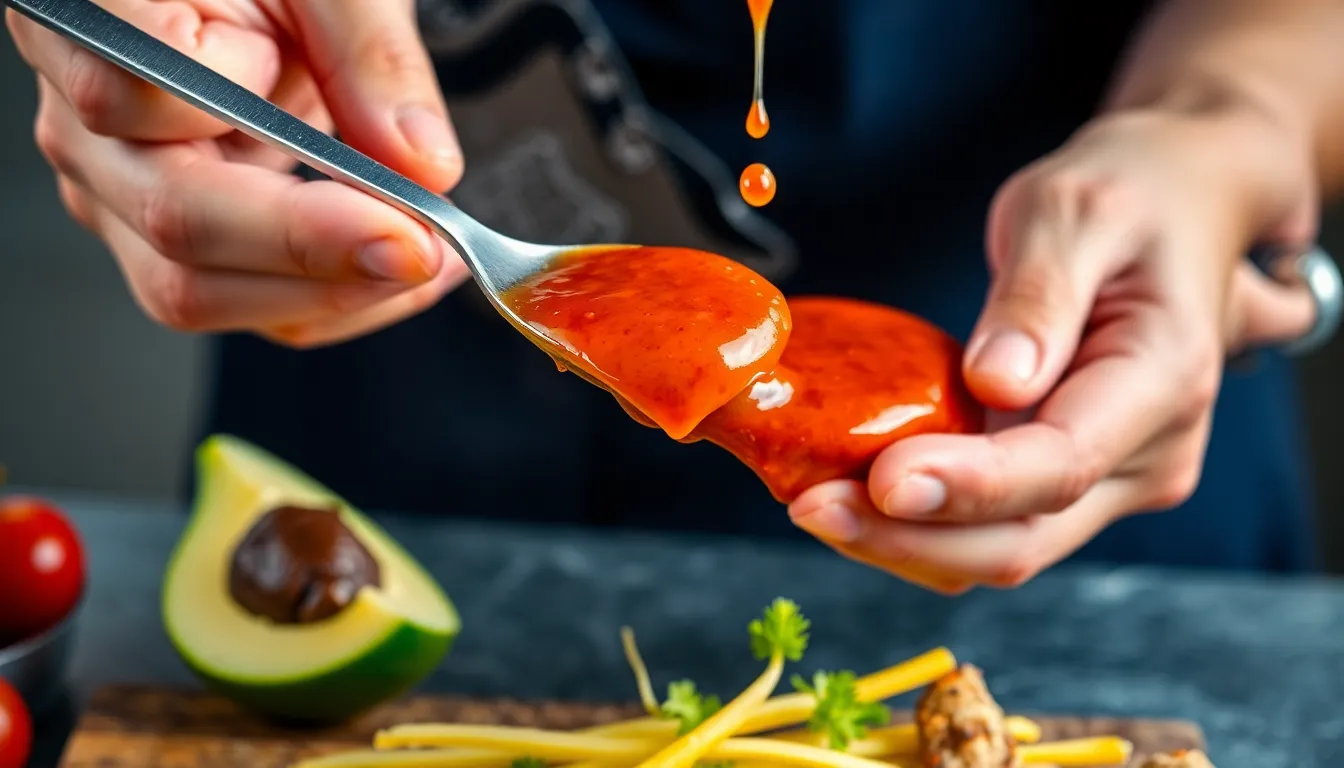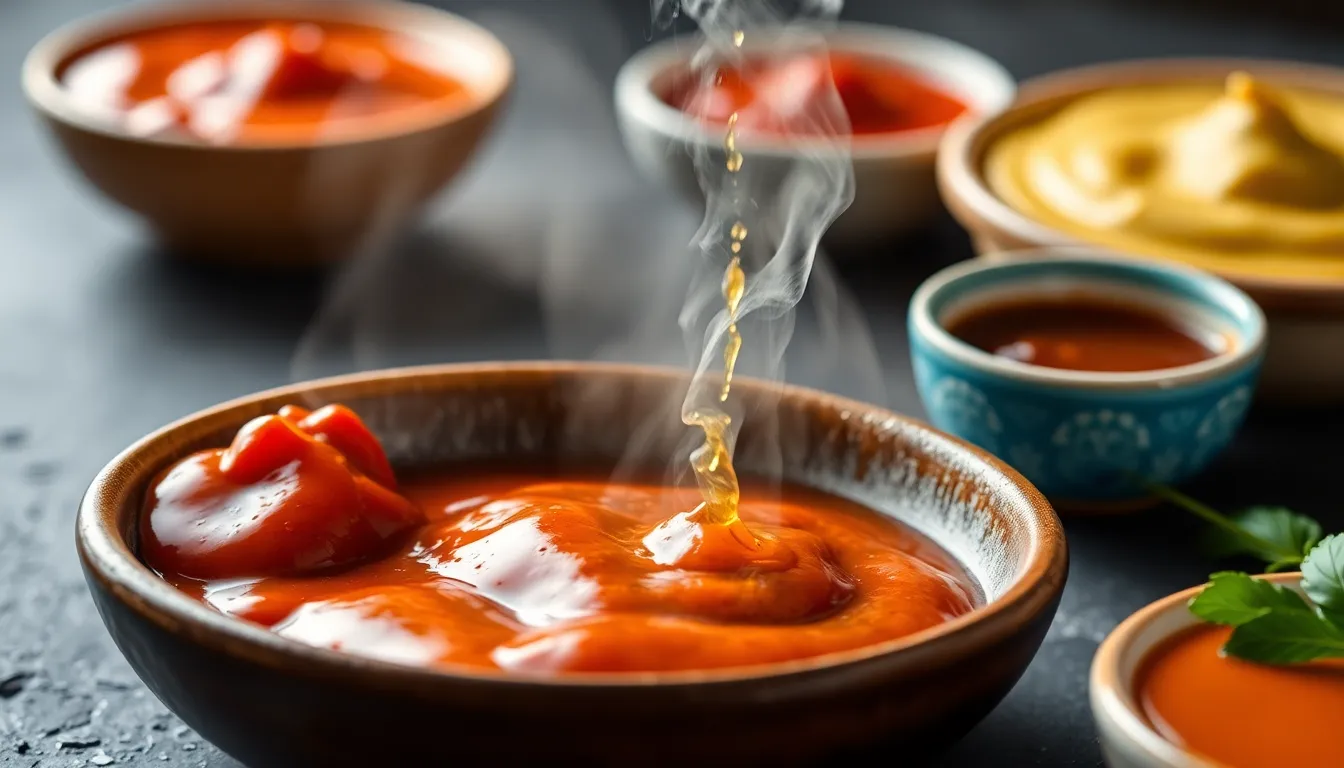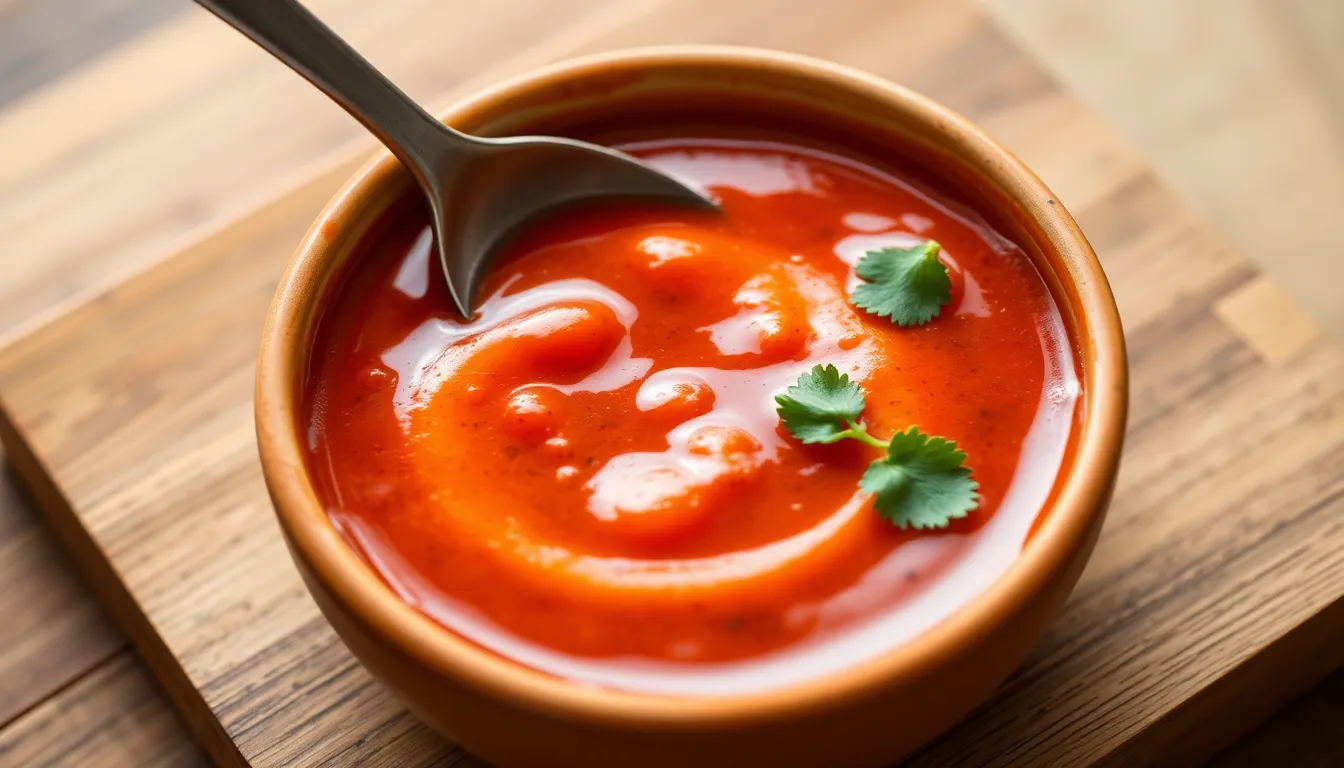Saucy Science: How to Pair the Perfect Sauce with Your Favorite Proteins
Introduction: The Art and Science of Sauces
Sauces are the unsung heroes of the culinary world, having the power to transform a mundane protein into a gastronomic delight. Understanding the importance of sauces in cooking is vital, as they provide depth, richness, and a burst of flavor. The right sauce not only complements a dish but can also define its character, making a seemingly simple meal feel gourmet.
In this exploration of the saucy science behind flavor pairing, we’ll delve into the concept of flavor profiles, uncovering how the right combination can elevate your favorite proteins. Whether you’re a novice cook or an experienced chef, mastering the art of sauce pairing can take your cooking game to the next level.
Section 1: Understanding Flavor Profiles
1.1 The Basics of Flavor
Flavor is a complex interplay of five basic tastes: sweet, sour, salty, bitter, and umami. Understanding these tastes and how they interact is essential for creating harmonious dishes. Here’s a brief rundown of each:
- Sweet: Often derived from sugars, found in fruits, honey, and some vegetables.
- Sour: The acidity in foods, found in citrus fruits, vinegar, and fermented products.
- Salty: Derived from salt; enhances flavor and balances sweetness and bitterness.
- Bitter: Found in foods like dark chocolate, coffee, and certain greens; can add complexity.
- Umami: The savory taste found in meats, cheeses, mushrooms, and fermented products.
Each of these tastes plays a crucial role in creating the overall flavor of a dish. The perfect balance can elevate the dining experience, making it memorable.
1.2 The Flavor Wheel: A Guide to Pairing
The flavor wheel is a visual representation that helps chefs and home cooks alike understand how different flavors can work together. By pairing proteins with complementary sauces, you create a symphony of tastes that enhance the natural flavors of the main ingredient. Below is a handy flavor wheel that highlights ideal sauce pairings for various proteins:
| Protein | Sweet Sauces | Savory Sauces | Sour Sauces | Spicy Sauces | Umami Sauces |
|---|---|---|---|---|---|
| Chicken | Teriyaki, Honey | Garlic Butter | Lemon Herb | Sriracha | Soy Sauce |
| Beef | BBQ, Maple Glaze | Red Wine Reduction | Chimichurri | Spicy Mustard | Worcestershire |
| Fish | Mango Salsa | Garlic Lemon Butter | Tartar Sauce | Spicy Aioli | Miso Marinade |
| Pork | Apple Cider Glaze | Hoisin Sauce | Mustard Sauce | Chili Paste | Teriyaki |
Section 2: Sauces for Popular Proteins
2.1 Chicken: Versatile and Flavorful
Chicken is one of the most versatile proteins, lending itself to a wide range of sauces from around the globe. Here are some of the best sauce pairings:
- Teriyaki: A sweet and savory sauce that’s fantastic for grilled chicken, especially in Asian-inspired dishes.
- Garlic Butter: A rich, creamy sauce that enhances the natural flavor of sautéed chicken.
- Chimichurri: This Argentine herb sauce adds a fresh, zesty kick, perfect for grilled chicken dishes.
- Honey Mustard: The combination of sweet honey and tangy mustard creates a delightful glaze for baked chicken.
Regional specialties, such as Thai coconut curry or Mediterranean lemon and olive oil dressings, also provide adventurous options for chicken dishes. The key is to balance flavors with the cooking method; for instance, grilling chicken pairs beautifully with a tangy chimichurri.
2.2 Beef: Bold and Robust
When it comes to beef, the sauces should match its bold flavors. Here are classic options:
- BBQ Sauce: Ideal for grilled steaks or ribs, offering a smoky, sweet flavor profile.
- Red Wine Reduction: A sophisticated sauce that complements braised beef, adding depth and richness.
- Chimichurri: Again, this sauce shines with grilled beef, balancing the meatiness with freshness.
- Mushroom Sauce: Creamy and earthy, it pairs well with steak, enhancing its robust flavor.
The cooking method plays a significant role in sauce selection. For example, grilling can bring out smoky flavors, while braising allows for richer, more complex sauce development.
2.3 Fish: Light and Fresh
Fish is delicate, and the right sauce should enhance rather than overwhelm. Here’s what works best:
- Mango Salsa: Offers a refreshing, fruity contrast to grilled or baked fish, especially white fish.
- Garlic Lemon Butter: A simple yet elegant sauce for pan-seared fish, enhancing its natural flavors.
- Spicy Aioli: A creamy, zesty sauce perfect for fried fish or fish tacos, adding a kick of flavor.
- Miso Marinade: Brings an umami punch to fish, especially when grilled or broiled.
The role of acidity is crucial in fish sauces; it helps to brighten flavors while cutting through the richness of the fish.
2.4 Pork: Sweet and Savory Combinations
Pork pairs beautifully with both sweet and savory sauces. Here are some top choices:
- Apple Cider Glaze: Adds a sweet and tangy element that complements roasted pork.
- Hoisin Sauce: This sweet and thick sauce works well with stir-fried or grilled pork.
- Mustard Sauce: A tangy sauce that enhances the flavor of pork chops or roasts.
- Barbecue Sauce: A classic pairing that brings sweetness and smokiness to pulled pork.
Balancing sweetness with acidity is vital when choosing sauces for pork. For instance, a sweet glaze can be beautifully offset by a tangy mustard sauce.
Section 3: DIY Sauce Recipes to Elevate Your Proteins
3.1 Quick and Easy Sauces
Sometimes, you need a delicious sauce in a hurry. Here are a few simple recipes that can be whipped up in under 15 minutes:
- Quick Teriyaki Sauce: Combine 1/2 cup soy sauce, 1/4 cup honey, 1 tablespoon rice vinegar, and a tablespoon of cornstarch mixed with 2 tablespoons of water. Cook over medium heat until thickened.
- Garlic Herb Butter: Mix 1 stick of melted butter with minced garlic, chopped parsley, salt, and pepper to taste.
- Spicy Yogurt Sauce: Blend plain yogurt with lime juice, chopped cilantro, and a dash of hot sauce.
- Honey Mustard: Whisk together equal parts honey and Dijon mustard for a quick glaze.
3.2 Gourmet Sauces for Special Occasions
For those times when you want to impress your guests, try these gourmet sauce recipes:
- Red Wine Reduction Sauce: Simmer 1 cup red wine with 1 minced shallot and a sprig of thyme until reduced by half. Stir in 1/2 cup beef broth and reduce further, then whisk in 1 tablespoon of butter before serving.
- Bearnaise Sauce: Create a classic by whisking together egg yolks, white wine vinegar, tarragon, and melted butter over a double boiler until thickened.
- Chimichurri: Blend fresh parsley, garlic, red wine vinegar, oil, and spices for a vibrant sauce that can be used on grilled meats.
Presentation is key—consider serving these sauces in elegant ramekins or drizzled artfully over your protein dish to wow your guests.
3.3 Customizing Your Sauces
The beauty of sauce-making is its flexibility. Here are some tips to help you customize sauces to suit your palate:
- Adjust the Sweetness: Add more sugar or honey to balance out an overly acidic sauce.
- Boost Umami: Incorporate ingredients like miso paste, soy sauce, or nutritional yeast for added depth.
- Incorporate Seasonal Ingredients: Use fresh herbs, fruits, or vegetables that are in season for brighter, more vibrant flavors.
- Experiment with Spices: Adding spices like cumin, coriander, or chili powder can give sauces a unique twist.
Section 4: Common Mistakes and How to Avoid Them
4.1 Overpowering Your Proteins
One common mistake is creating a sauce that overpowers the protein. Always keep the flavor of the main ingredient in mind to maintain balance. Remember, sauces should complement, not dominate.
4.2 Inconsistent Textures
Ensure that your sauce has a consistent texture. A watery sauce can detract from the dining experience. If your sauce is too thin, consider thickening it with a cornstarch slurry or reducing it over heat.
4.3 Ignoring Acidity
Acidity is crucial for balancing flavors. If a sauce feels flat, a splash of vinegar or a squeeze of lemon juice can elevate it and add brightness. Don’t overlook this essential component!
4.4 Not Tasting as You Go
Don’t forget to taste your sauce at different stages of cooking. This helps in identifying imbalances early, allowing you to adjust flavors before serving.
Conclusion: Mastering the Saucy Science
The art of pairing sauces with proteins is both a science and a form of culinary expression. By understanding flavor profiles, exploring various sauce options, and mastering a few key recipes, you can elevate your meals from ordinary to extraordinary. Remember, the right sauce can not only enhance the taste but can also create a memorable dining experience that will leave your guests asking for more. So grab your whisk, put on your apron, and step into the delightful world of sauces!




